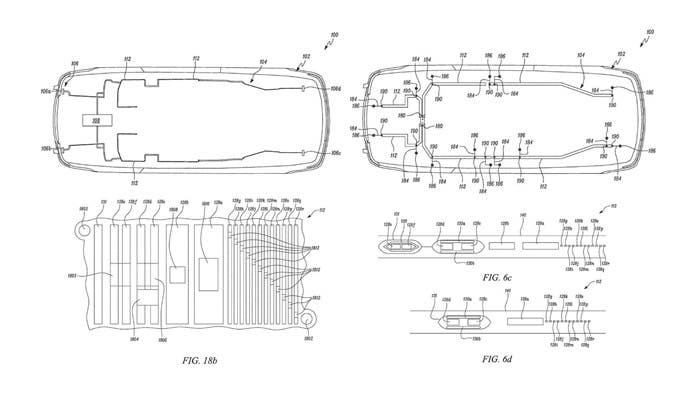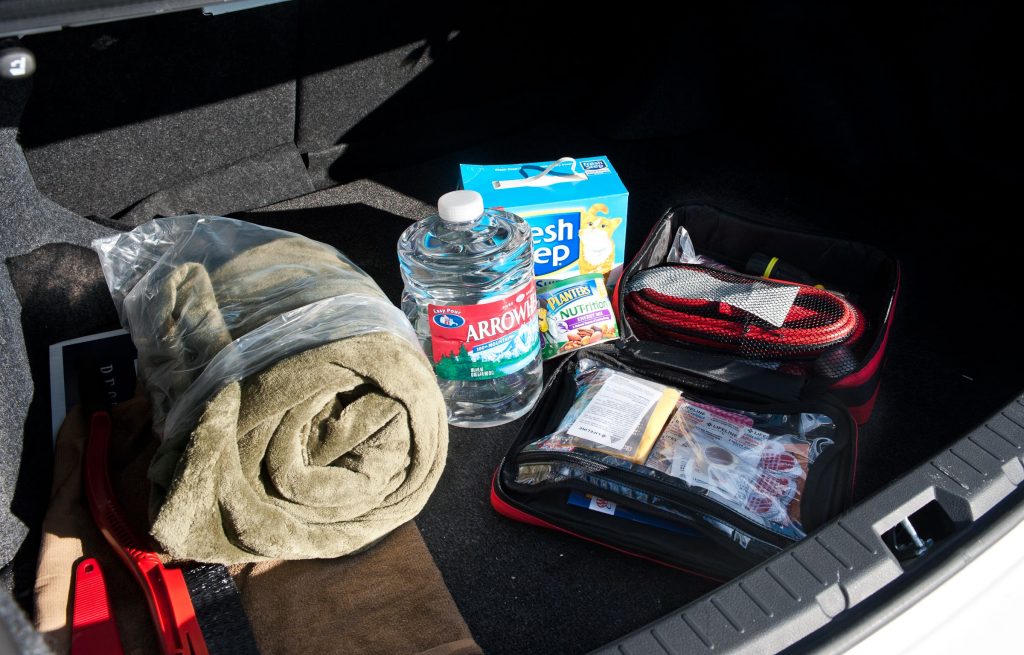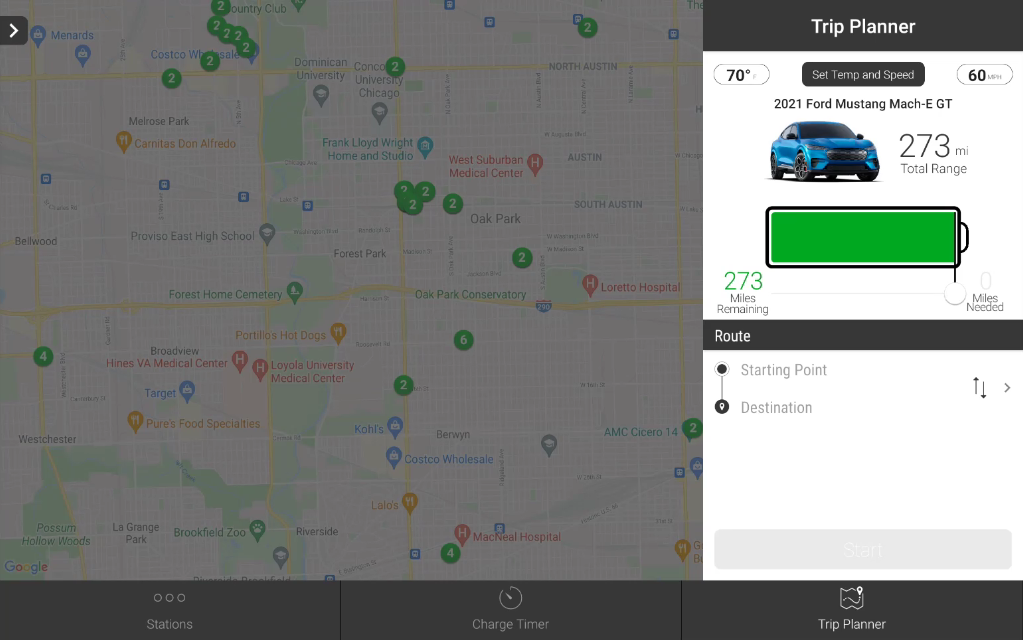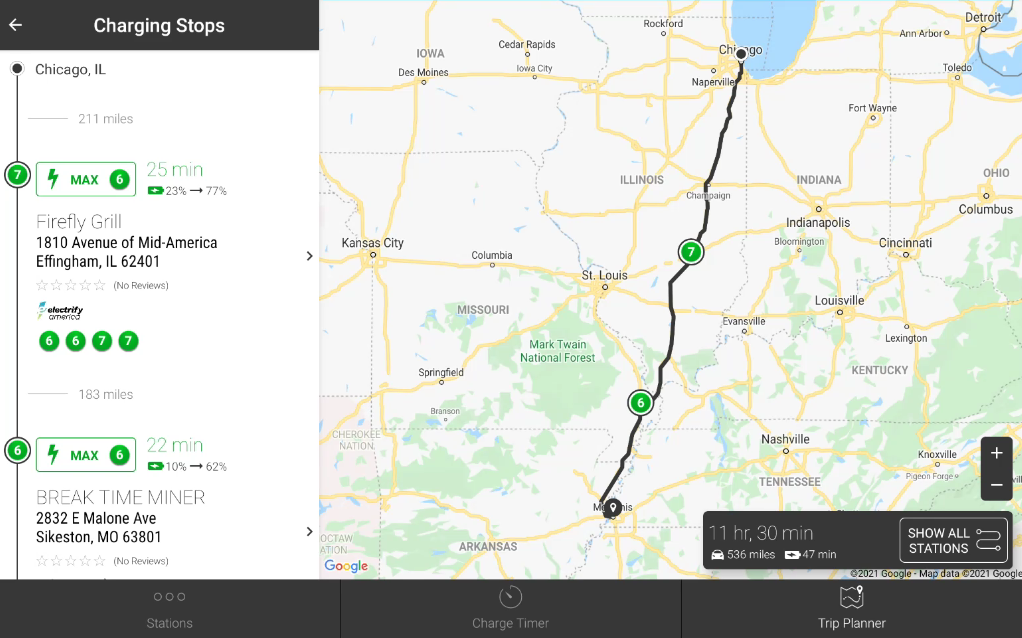Supporters of EVs will tell you that electric cars are just like regular cars. For the most part, they’re right. You step on the pedal on the right and the car goes, you turn the wheel and the car turns, and the only real difference is what kind of fuel goes in it. If we’re being completely honest, though, that’s only mostly true. Most of the time, the only difference is what kind of fuel goes into the car, but the other differences probably need explaining in order for mainstream buyers to buy electric cars.
To provide that explanation, we’ve launched a new segment called “Electric Car FAQs” that hopes to answer those oddball questions that come up one percent of the time. Today’s question: can you drive a Tesla in Snow?
EV FAQs: Can You Drive a Tesla in Snow?
Let’s get this out of the way up front: yes, you can drive a Tesla in snow. Heck, you can drive just about any electric car in snow, just like you can drive just about any internal combustion engine (ICE) powered car in snow — but the experience can be very different, for two reasons. The first is that electric cars deliver all of their torque at 0 rpm. Max power now definitely makes for great fun and spirited driving, but isn’t necessarily what you want on a slick, icy road. The second is that extreme weather, heat or cold, has a negative impact on your vehicle’s efficiency — which means you’ll have a shorter driving range with a full “tank” of electrons in your battery.
And, sure, extreme weather does have a noticeable impact on fuel economy in ICE-powered cars, but if you have to stop for gasoline or diesel one exit earlier than usual on your trip to grandma’s this Thanksgiving, that’s usually no big deal. If you have to stop one exit earlier in an EV? That could mean the difference between a ten-minute charging stop and a stop that could take hours.
So, what steps can you take to make sure your EV holiday road trips are great experiences you’ll remember fondly? Read on.
Get Your Electric Car Ready for Winter
1. Winter Tires — if you live in an area that experiences some freezing rain, sleet, or snow, investing in winter tires makes a ton of sense. If you live somewhere that gets lots of snow, for months on end, snow tires are a must-have.
If you’ve never driven a car with winter tires in the ice, trust us when we say that it’s a totally different experience. The traction, the braking, the turning — every aspect of a vehicle’s dynamics and handling is improved, and the difference between “summer” tires and “winter” tires is even more dramatic than the difference between two-wheel drive and all-wheel drive. If you don’t believe that, check out this video from Tyre Reviews comparing an all-wheel-drive BMW SUV with standard tires vs. that same BMW with two-wheel drive and winter tires.
AWD vs. 2WD & Winter Tires
As you can see in the video, all-wheel drive doesn’t negate the laws of physics. You can still get stuck in a snow drift or spin out on an icy off-ramp if you don’t respect the weather — and putting proper boots on your car is just as important putting proper boots on your feet.
So, if you’re looking to drive a Tesla in snow and ice, check out the winter tire selection in the Tesla online store, or at a reputable Tesla accessory and performance shop, like T Sportline. For other EVs, check with your dealer for recommended tires, or chat with the experts at TireRack.
2. Windshield Wipers and Wiper Fluid — a fresh set of wipers can make a dramatic difference in visibility, especially in heavy sleet and freezing rain storms. If you haven’t changed your wiper blades recently, they may be well past their best — and, in fairness, wipers degrade relatively slowly, so it might not be obvious how bad they really are.
To make sure you have superior visibility in the worst winter weather conditions, consider specialized wiper blades — something like the Bosch Snow Drivers or Michelin Fahrenheit wipers. The best thing about new wipers is that they’re pretty easy to install (as you can see in the video below), assuming you get wipers designed to work with your car in the first place (as you can also see in the video below).
Installing Wiper Blades on a Model 3
Keep in mind, even new wipers can get iced to your windshield, so you’ll want to make sure they’re not frozen in place before you “flip the switch” to turn them on, and if you’re regularly parking your EV outside, putting your wipers in service mode will also help.
Finally, you’ll want to refill your car’s wiper fluid with something that’s rated for winter use — which is a fancy way of saying, “won’t freeze.” You can take that a step further, however, by replacing your conventional wiper fluid with a de-icer. Companies like Prestone have de-icing fluid that they claim “is formulated to melt ice & frost fast, down to -34°F,” and work without harming your car’s washer system. Combine that with some “heat smart” thinking (more on that later), and you’ll have a crystal-clear view of the road ahead, all winter long.
3. Floor Mats — this one might seem like an optional addition to your winter prep list, but one quick look at a Tesla wiring diagram (below) should be enough to tell you — even if you don’t quite know what you’re looking at — that there’s a lot of expensive electronic kit under your seat. As you can imagine, your car’s expensive electronics do not play well with whatever salty, icy, muddy snow you might be dragging into it. That’s why a good set of form-fitting, waterproof floor mats are a must-have.

If you have a Tesla, the Tesla online store has some floormats that are designed to keep your carpet (and the wiring underneath it) dry through the winter. For other electric cars, check with your local dealer for an OEM option (the Volvo Protection Package mats are excellent) or try looking into a set of WeatherTech mats, which the company claims are made with the help of 3D laser scanning for a super-precise fit on just about any car.
4. Emergency Kit — you should have some basic emergency supplies in your car regardless of whether it’s ICE-powered or electric, summer or winter. In winter, though, it’s even more important to be prepared for an emergency situation. The National Safety Council has compiled this comprehensive list of what you should keep in your vehicle:
- A properly inflated spare tire, wheel wrench and tripod jack
- Jumper cables
- Tool kit and/or a multipurpose utility tool
- Flashlight and extra batteries
- Reflective triangles and brightly colored cloth to make your vehicle more visible
- Compass
- First aid kit with gauze, tape, bandages, antibiotic ointment, aspirin, a blanket, nonlatex gloves, scissors, hydrocortisone, thermometer, tweezers and instant cold compress
- Nonperishable, high-energy foods, such as unsalted nuts, dried fruits and hard candy
- Drinking water
- Reflective vest in case you need to walk to get help
- Car charger for your cell phone
- Fire extinguisher
- Duct tape
- Waterproof rain poncho
- Additional items for cold weather include a snow brush, shovel, windshield washer fluid, warm clothing, cat litter (for additional traction), and blankets
Sure, the NSC’s list might seem a bit over the top — but it’s covering all the bases. As long as you have good cell reception, you could probably get away with a first aid kit, a flashlight, water, and some kind of additional layer for warmth (like a jacket or thermal blanket) in case you’re stranded on the side of the road for extended periods.

That said, a combination snow brush and ice scraper is probably a must-have in the Midwest and Canada. As for which one to buy, you could hardly ask for newspaper with more credibility than the New York Times, and it chose the Hopkins SubZero 80037 as the best combination snow brush/ice scraper you could buy in 2021.
Which, I mean, I certainly didn’t think that the NYT did product reviews like that, but everything’s been a bit wonky since that whole Harambe deal, and here we are.
5. The Car Wash is Your Friend — remember that line in the floor mat section where we talked about all the expensive wiring and electronics under the carpet? There’s a lot more expensive stuff under your car, and every bit of it — from the suspension control arms to the brake lines to the axle boots to the batteries themselves — is better off not caked in salt, ice, and mud.
Some dealer groups will offer free car washes for life as a perk of buying your car from them, so take them up on the offer and have them wash the car at least every other week while there’s salt on the roads. If you’re driving a Tesla in snow, you obviously didn’t go through a dealer, but a monthly membership at a local car wash should net you the same benefit.
Get Yourself Ready for Winter
Now that your car is ready for winter, it’s time to get yourself ready for winter driving by changing the way you think about and use your car. No, I don’t mean “easy on the gas, brake early, and steer smoothly.” Though, that’s certainly important. What I mean is that electric cars work a little differently than ICE-powered cars, and understanding those differences is going to give you a much better experience than simply “winging it” the way you might be used to in your gas car.
1. Learn How to Precondition Your Tesla — preconditioning the battery is crucial to driving your Tesla in snow. That’s true of any other EV also, and is a bit like warming up a gas engine so the oil can reach the top of the cylinder heads before you put it under load. If your car has this feature, you can usually activate and control it using your car’s infotainment system or a connected smartphone app.
What’s more — if you can power on your car while it’s still plugged into its charger, you can precondition the battery, heat your seats and steering wheel, and get the cabin nice and cozy without negatively impacting your range — the electricity you’re using to warm up the car is effectively being drawn from the outlet, not the car’s battery pack!
2. Get the Right Apps — while we’re on the topic of apps, the right app can absolutely make or break your EV ownership experience. Companies like Tesla and Volvo have great apps to help you locate and even precondition your car to maximize range, but even Tesla’s station-finding app can leave owners frustrated if they don’t put it to good use.
For trip planning, I like Chargeway because Matt Teske is my podcasting buddy, sure — but also because its trip planner is more than just a station finder. You tell it the exact vehicle you’re driving and where you’re going, then it calculates the best places to stop in order for you to minimize charge time. It also also lets you plug in the current temperature and your average driving speed, to give you a much more accurate view of the trip you’re about to embark on.


If you’re in Europe, A Better Route Planner is your best bet, offering similar weather and speed functionality, as well as a similar “best option” calculation that makes use of local traffic data. The UI is a bit clunky, compared to some of the more polished apps, but if you’re in Sweden it can’t be beat.
3. Learn to Be Heat Smart — internal combustion engines make a lot of excess heat, so redirecting some of that heat into the cabin to stay warm in the winter is relatively easy. An electric car? Not so much, so if you want to drive your Polestar or Tesla in snow, you need to be “heat smart.”
“Using the car’s heater is a pretty inefficient use of your electricity,” writes Tom Barnard at Electrifying, in an article about, well, being heat smart. “If you think about it, you don’t get many battery-operated heaters to use around the home, as it’d take an awful lot of AAs to warm anything … try and heat yourself rather than the empty space around you … (that means) turning down the car’s main heater and cranking the heated seats and steering wheel up if you have them. Likewise, if you have a heated windscreen, use that rather than the blower to defrost.”
It’s great advice, and when it’s followed along with preconditioning the car while it’s plugged into the charger, you’ll be able to get back plenty of the range you “lost” to the cold.
4. Plug In — when you get to where you’re going in your EV, try to find a place to plug it in and charge. Even if this is a slow, “level 1” charge from a regular outlet, this is a case where something is better than nothing, and it will pay dividends when it’s time to precondition your car for the long ride home.
If you’ve followed all these steps, it’s sure to be a safe and happy drive.





